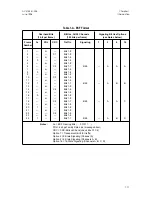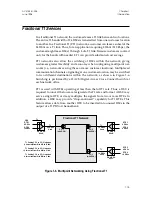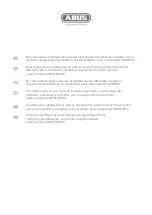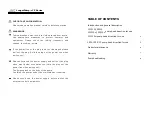
Customer Premises Equipment
Various types of equipment are employed at the customer’s location. Digital
Terminating Equipment (DTE) provides the source for the transmitted signal
and the destination for the received signal. DTE includes such equipment as:
•
Multiplexers.
•
PBXs.
•
T1 Channel Banks.
•
Front-End Processors.
•
Computers.
A Data Service Unit (DSU) converts one or more subrate signals (i.e., signals
transmitted at a subfrequency of the 1.544-Mbps T1 signal) to a T1 signal. Finally,
a Channel Service Unit (CSU) interfaces the customer’s T1 DTE or DSU to the public
T1 network. The CSU provides various termination and interface functions as
specified by AT&T Publication 62411 and FCC Rules, Part 68, including:
•
Electrical interface.
•
Surge and lightning protection.
•
Signal regeneration and pulse density assurance.
•
Keep-Alive and Yellow Signal.
•
Loopback to the line controlled from the network.
T1 Signal Characteristics
The T1 signal is a bipolar pulse train. Data is encoded using pulse code modu-
lation (PCM) and time-division multiplexing (TDM). In other words, the signal
is divided into time slots of 648 nanoseconds each (1,544,000 time slots per
second), with data encoded by the presence or absence of a pulse in each time
slot. A pulse, if it exists, will have one-half the duration of the time slot and an
amplitude of three volts. When a pulse is present, the time slot data is a ONE;
when no pulse is present, the time slot contains a ZERO.
T1 signals employ Alternate Mark Inversion (AMI) line coding, in which con-
secutive pulses are expected to be of opposite polarity. Consecutive pulses of
the same polarity (called a “bipolar violation” or BPV) indicate a transmission
error. Figure 1-1 shows an example of AMI line coding.
Chapter 1
ACST-0351-005
Introduction
June 1996
1-4











































